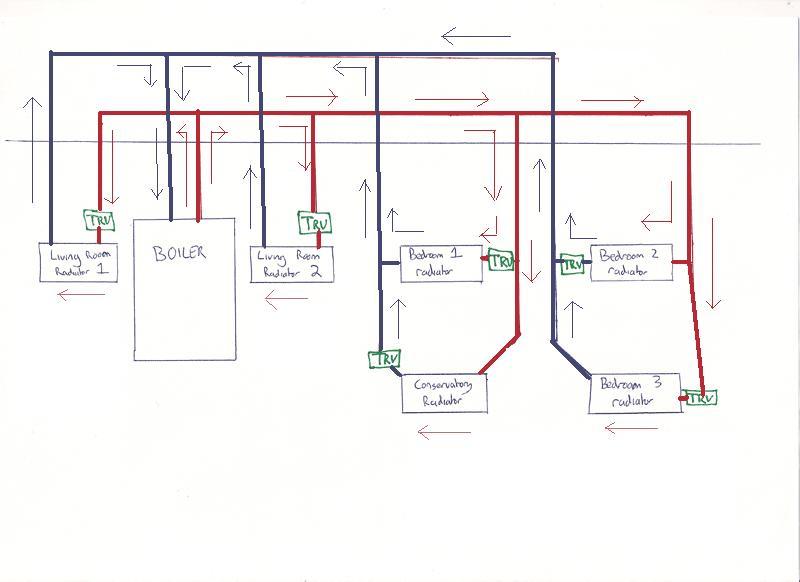Yes, it is a bungalow.
The boiler pipework goes straight into the loft, so I havent worked out the position (yet - I'll complete the diagram as soon as I can get into the loft)
The top line is not supposed to represent a pipe - sorry. I havent managed to get into the loft yet, so I dont know the pipework up there.
The IN and OUT I decided by the side the TRV was on on the rad. I noticed Bed 2 and bed 3 were the opposite way round (as I said in the final paragraph of my last post)
The boiler pipework goes straight into the loft, so I havent worked out the position (yet - I'll complete the diagram as soon as I can get into the loft)
The top line is not supposed to represent a pipe - sorry. I havent managed to get into the loft yet, so I dont know the pipework up there.
The IN and OUT I decided by the side the TRV was on on the rad. I noticed Bed 2 and bed 3 were the opposite way round (as I said in the final paragraph of my last post)




